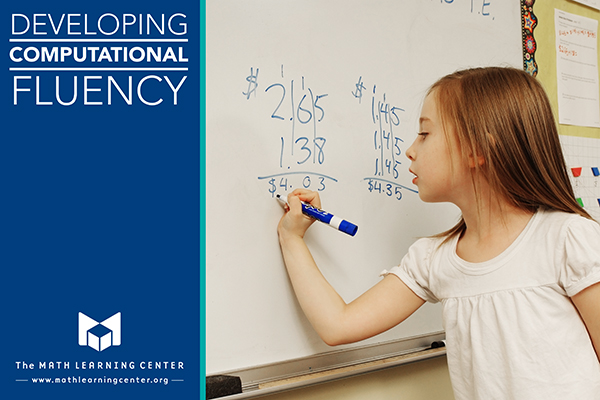
Developing Computational Fluency, part 1
Computational fluency means more than quickly producing correct answers. It requires conceptual understanding and is exhibited through efficiency, accuracy, and flexibility. As you guide your students to mathematical fluency, you will give them many opportunities to construct relationships among numbers to make sense of basic facts and be able to retrieve them.

Students who attain fluency with basic math facts have far fewer obstacles to building higher-order mathematical skills. Cognitive research indicates that math problem solving occurs in the working memory, which is able to process only a few calculations at a time. A student who cannot fluently grasp the first steps of a multistep problem may not be able to solve the problem simply because he or she isn’t able to hold the required number of calculations in their working memory. We want students to know math facts much like they recognize sight words in reading—automatically, without thinking about them. Mathematically fluent students are not only able to provide correct answers quickly but also to use facts and computation strategies they know to efficiently determine answers that they do not know.
In future posts we will discuss:
- Developing multiple aspects of fluency
- Building fluency through use of strategies, intuitive understanding, and mathematical models
What are some techniques that you've used with your students to help build computational fluency?
Hannah Chandler is a curriculum writer for MLC.